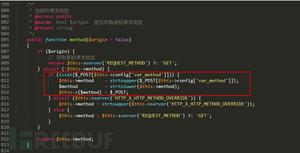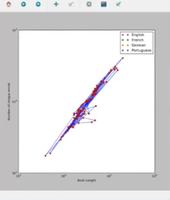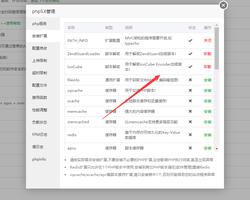Python如何接受用户输入,并验证?
Python如何接受用户输入,并验证?
回答:
完成此操作的最简单方法是将input方法置于while循环中。continue当输入错误时使用,break当你感到满意时使用。
当你的输入可能引发异常时
使用try和except检测用户何时输入了无法解析的数据。
while True: try:
# Note: Python 2.x users should use raw_input, the equivalent of 3.x's input
age = int(input("Please enter your age: "))
except ValueError:
print("Sorry, I didn't understand that.")
#better try again... Return to the start of the loop
continue
else:
#age was successfully parsed!
#we're ready to exit the loop.
break
if age >= 18:
print("You are able to vote in the United States!")
else:
print("You are not able to vote in the United States.")
实施你自己的验证规则
如果要拒绝Python可以成功解析的值,则可以添加自己的验证逻辑。
while True: data = input("Please enter a loud message (must be all caps): ")
if not data.isupper():
print("Sorry, your response was not loud enough.")
continue
else:
#we're happy with the value given.
#we're ready to exit the loop.
break
while True:
data = input("Pick an answer from A to D:")
if data.lower() not in ('a', 'b', 'c', 'd'):
print("Not an appropriate choice.")
else:
break
结合异常处理和自定义验证
以上两种技术都可以组合成一个循环。
while True: try:
age = int(input("Please enter your age: "))
except ValueError:
print("Sorry, I didn't understand that.")
continue
if age < 0:
print("Sorry, your response must not be negative.")
continue
else:
#age was successfully parsed, and we're happy with its value.
#we're ready to exit the loop.
break
if age >= 18:
print("You are able to vote in the United States!")
else:
print("You are not able to vote in the United States.")
将其全部封装在一个函数中
如果你需要询问用户许多不同的值,则将此代码放在函数中可能很有用,因此你不必每次都重新键入。
def get_non_negative_int(prompt): while True:
try:
value = int(input(prompt))
except ValueError:
print("Sorry, I didn't understand that.")
continue
if value < 0:
print("Sorry, your response must not be negative.")
continue
else:
break
return value
age = get_non_negative_int("Please enter your age: ")
kids = get_non_negative_int("Please enter the number of children you have: ")
salary = get_non_negative_int("Please enter your yearly earnings, in dollars: ")
放在一起
你可以扩展此思想,以创建非常通用的输入函数:
def sanitised_input(prompt, type_=None, min_=None, max_=None, range_=None): if min_ is not None and max_ is not None and max_ < min_:
raise ValueError("min_ must be less than or equal to max_.")
while True:
ui = input(prompt)
if type_ is not None:
try:
ui = type_(ui)
except ValueError:
print("Input type must be {0}.".format(type_.__name__))
continue
if max_ is not None and ui > max_:
print("Input must be less than or equal to {0}.".format(max_))
elif min_ is not None and ui < min_:
print("Input must be greater than or equal to {0}.".format(min_))
elif range_ is not None and ui not in range_:
if isinstance(range_, range):
template = "Input must be between {0.start} and {0.stop}."
print(template.format(range_))
else:
template = "Input must be {0}."
if len(range_) == 1:
print(template.format(*range_))
else:
print(template.format(" or ".join((", ".join(map(str,
range_[:-1])),
str(range_[-1])))))
else:
return ui
用法如下:
age = sanitised_input("Enter your age: ", int, 1, 101)answer = sanitised_input("Enter your answer: ", str.lower, range_=('a', 'b', 'c', 'd'))
以上是 Python如何接受用户输入,并验证? 的全部内容, 来源链接: utcz.com/qa/433680.html







